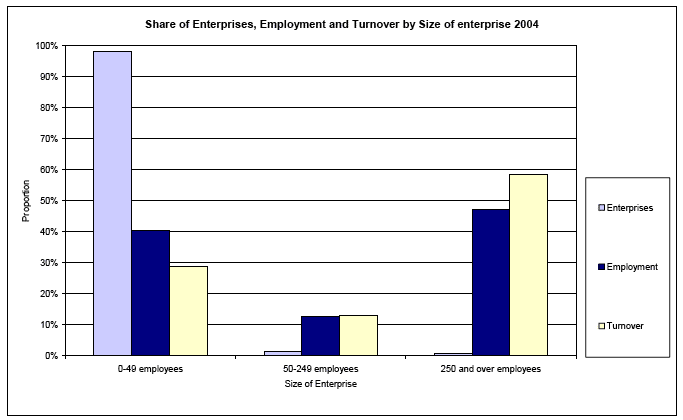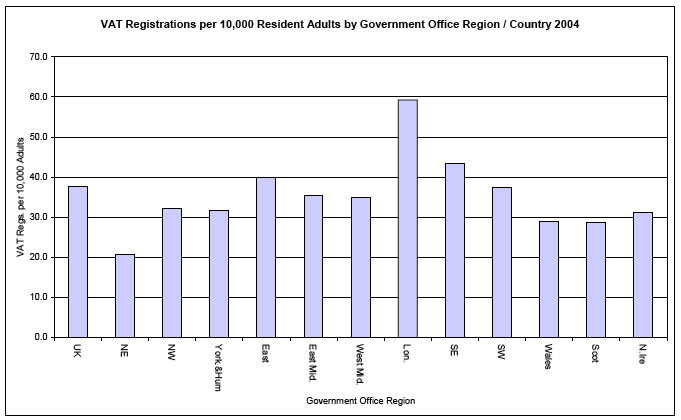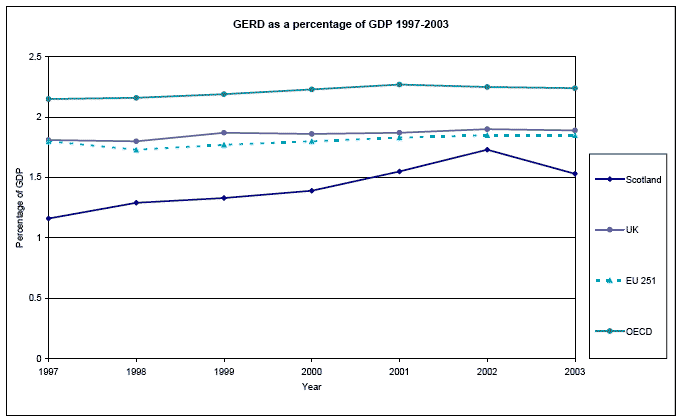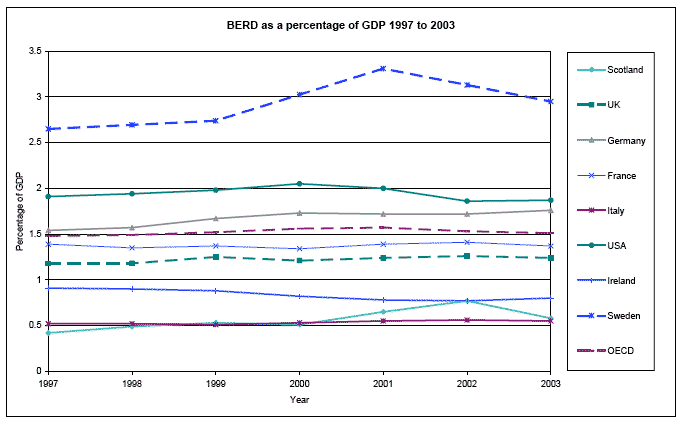High Level Summary of Statistics: Key Trends for Scotland 2006
Presents key trends for Scotland across all areas of governement activity.
2. Businesses
Growing Businesses
Businesses in Scotland
Scotland lacks a critical mass of larger businesses, and a key challenge is growing and sustaining businesses of scale. In 2004, there were 270,245 private sector enterprises operating in Scotland, with associated employment of 1.880 million. SME's (enterprises with fewer than 250 employees) made up 99% of all enterprises and provided 53% of all jobs. However, the 2,240 large enterprises operating in Scotland accounted for almost 60% of turnover.

Source: Scottish Executive, Office for National Statistics (Inter Departmental Business Register)
Note: Includes unregistered enterprises, excludes central and local government. Turnover figures exclude financial intermediation services.
Web link
Scottish Corporate Sector Statistics
Business Registrations
New business formation is one of the key drivers of economic growth. A high business birth rate drives up levels of innovation, competitiveness and productivity, as firms are replaced by more competitive enterprises in the important process of business churn. VAT registrations are the most reliable official indicator of business start-ups but exclude the very smallest businesses.
In 2004, Scotland had 29 registrations per 10,000 of the adult population in comparison to the UK figure of 38. Excluding London and the South East would result in the UK figure falling to 33 per 10,000 resident adults. Scotland's position in terms of these figures has changed little in the past ten years.

Source: Small Business Service, Department of Trade and Industry
Web link
Small Business Service VAT statistics
Innovation and Research & Development
R&D Gross Expenditure
Innovation and Research & Development (R&D) are important both for individual firms, and for the economy as a whole. R&D is a component part of the innovation process, characterised as work that increases the stock of knowledge or results in the creation of new products. The introduction of new products or processes, or improvements to existing ones, is a prerequisite for firms to survive, evolve and grow in an increasingly competitive environment. The ongoing process of innovation improves and increases the rate of technical progress in the economy and is recognised in empirical studies as an important source of productivity growth, which is ultimately a key determinant of regional economic growth.
In terms of Gross Expenditure on R&D ( GERD, which includes businesses, government and higher education expenditure), Scottish expenditure as a proportion of GDP is broadly comparable to the UK and EU 25 averages, while remaining below the OECD average. In 2003, GERD as a percentage of GDP was 1.53% for Scotland and 1.89% for the UK in comparison to 2.24% for OECD.

Source: Scottish Executive, Organisation for Economic Cooperation and Development
Publication
Business Enterprise Research and Development in Scotland 2003 (Published 2005)
R&D Business Expenditure
There has been a significant gap in business R&D expenditure between Scotland and the UK and Organisation for Economic Cooperation and Development ( OECD) averages in recent years. Scottish Business Enterprise R&D ( BERD) was £521 million in 2003. This represented 0.58% of Scottish GDP; the comparable figures were 1.23% for the UK and 1.53% for the OECD as a whole. Over the longer term from 1999 to 2003, BERD increased by 20% in real terms, compared to an increase of 10% in the UK as a whole. Nevertheless, Scotland continues to perform less well than the UK average on this measure.

Source: Scottish Executive, Organisation for Economic Cooperation and Development
Publication
Business Enterprise Research and Development in Scotland 2003 (Published 2005)
There is a problem
Thanks for your feedback